Time to act: Road salts are stressing our urban lakes
New research links salinization to eutrophication in urban lakes.
By: Jovana Radosavljevic1, Stephanie Slowinski1, Fereidoun Rezanezhad1,2, and Philippe Van Cappellen1,2
1 Ecohydrology Research Group, Department of Earth and Environmental Sciences and Water Institute, University of Waterloo, Canada
2 Water Institute, University of Waterloo, Canada
Accelerating urban growth worldwide has been blamed for declining water quality of freshwater environments, including the eutrophication of lakes and other surface water bodies. Eutrophication can pose serious risks to drinking water sources and may ultimately cause the die-off of aquatic life. Eutrophication is generally assumed to be driven by the human-enhanced supply of phosphorus, but recent research out of the University of Waterloo found that at Lake Wilcox (a small lake in southern Ontario), eutrophication symptoms persisted even after external phosphorus inputs were reduced. So, what is causing this deterioration in water quality?
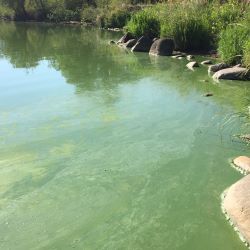
Eutrophication occurs when the water becomes rich in nutrients (such as nitrogen and phosphorus), allowing photosynthetic algae to flourish. After the algae die, the microbial decomposition of the algal detritus can cause the depletion of dissolved oxygen (O2) that, in extreme cases, results in the appearance of “dead” zones with very low (hypoxia) and even no dissolved O2 (anoxia). The depletion of O2, the release of toxins by harmful algal blooms (HABs), and other associated water quality impairments may ultimately cause the die-off of aquatic life, including fish, mammals, and plants, and pose serious risks to drinking water sources.
Lake Wilcox: a tale of urbanization
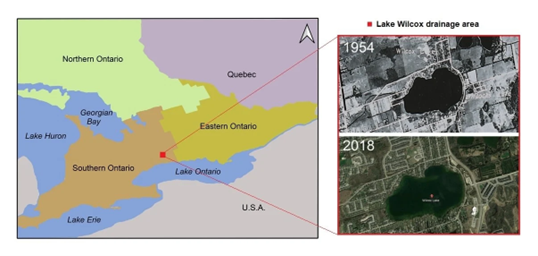
Lake Wilcox is a small kettle lake with a watershed of 2.4 km2 located in Richmond Hill, Ontario at the edge of the Toronto metropolitan area (Figure 1). The originally forested watershed has undergone significant land use changes since the early 1900s when the land was first converted to agriculture, followed by rapid urban development since the 1980s. As a result, the proportion of impervious land cover is now around 60%.
In the 1980s, the proliferation of toxic algal species, Harmful Algal Blooms (HABs), of blue-green algae became a serious environmental and health concern. To tackle this issue, stormwater management systems were implemented in the lake’s watershed to reduce the amount of phosphorus entering the lake. Despite this effort to decrease phosphorus, Lake Wilcox remained in a eutrophic state.
Salt pollution: a rising problem
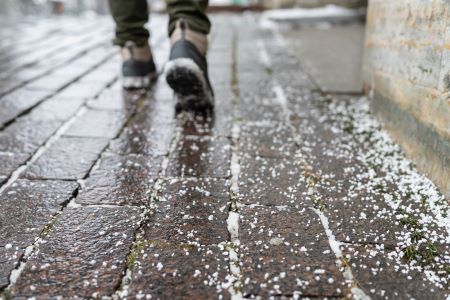
Excess de-icing salt on sidewalk (stock image).
Another global threat to freshwater quality is salinization. In urban and sub-urban areas of cold and cold-temperate climates, de-icing salts used to keep roads, sidewalks, and parking lots free of ice and snow during winter, often represent the major driver of salinization of nearby lakes. Because of the inflow of salt-carrying urban runoff, many of these lakes now have concentrations of salt ions, primarily chloride (Cl-) and sodium (Na+), that exceed ecological and drinking water limits. Individually, salinization and phosphorus enrichment are two well-known ecological stressors of freshwater lakes, yet their cumulative impacts on water quality are not as well known.
What is happening to Lake Wilcox?
Researchers from the University of Waterloo analyzed over two decades of water chemistry, land use, and climate data (1996-2018) to identify what factors were contributing to the changes in water chemistry.
The data showed that the drastic increase in urbanization (imperviousness) of the Lake Wilcox watershed has gone hand-in-hand with a large increase in the lake salinity, as indicated by the continuous increase of the chloride concentration (Figure 2). It also identified that the annual period in which the deeper waters of Lake Wilcox becomes anoxic (no dissolved O2) has progressively lengthened (Figure 3). The researchers revealed that this longer summer anoxia period is due to a strengthening of the thermal stratification (less mixing) of the water column, which is correlated to the rising salinity, and hence density, of the lake’s water. This implies that during the summer the deeper water layer (hypolimnion) is increasingly isolated from the (oxygenated) atmosphere.
The reduced vertical mixing due to increased salinity enhanced the release of phosphorus stored in the lake’s bottom sediments. This process is known as internal phosphorus loading and is favoured when the sediments are overlain by dissolved oxygen-depleted waters. In other words, salinization intensifies internal phosphorus loading by expanding anoxia in the lower layer of the lake due to strengthening thermal stratification.
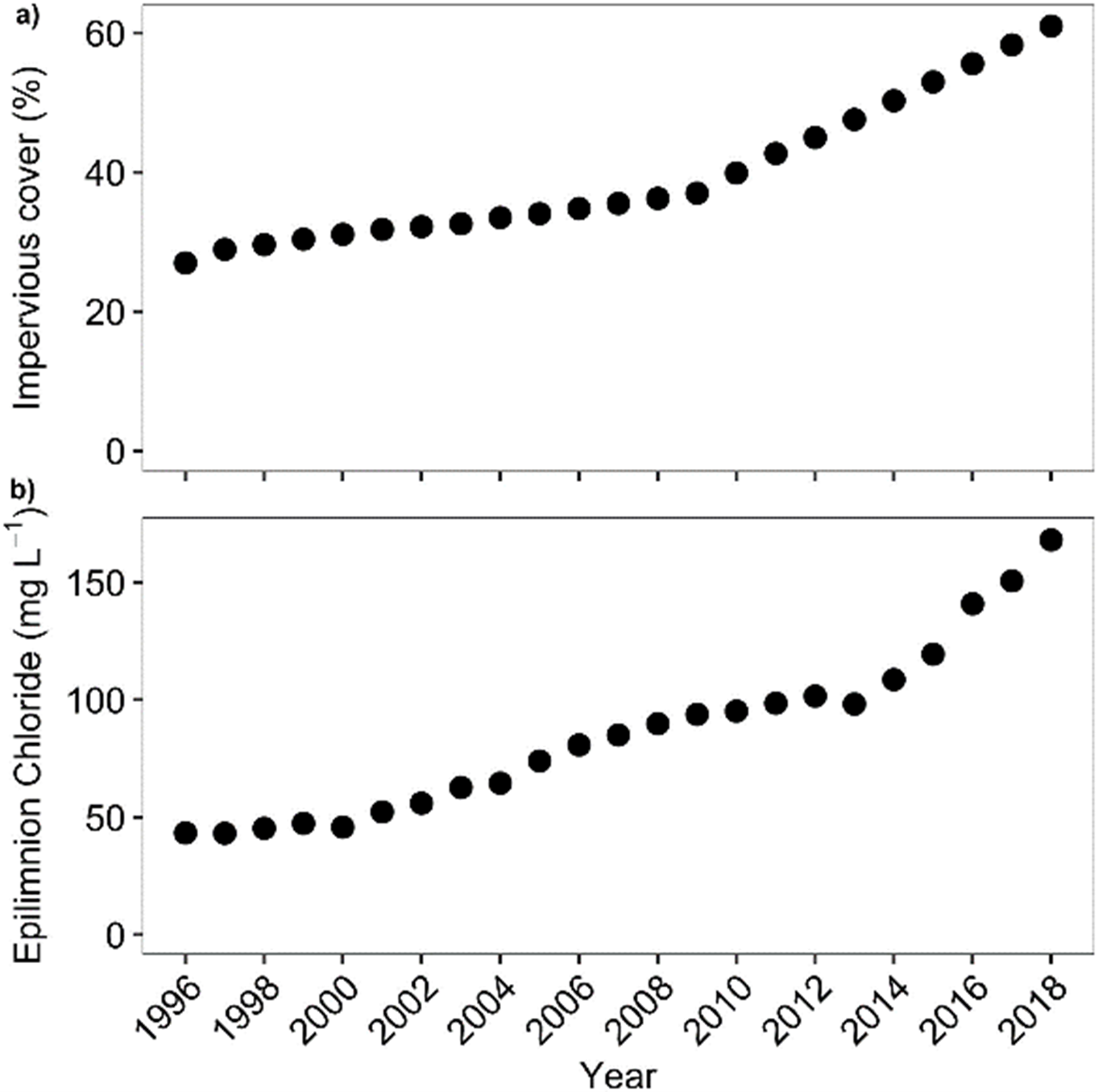

Figure 3. Mid-lake depth distributions of dissolved oxygen concentrations (DO) between 1996 and 2018. Note the lengthening of the yearly period of anoxia (blue color) after 2005.
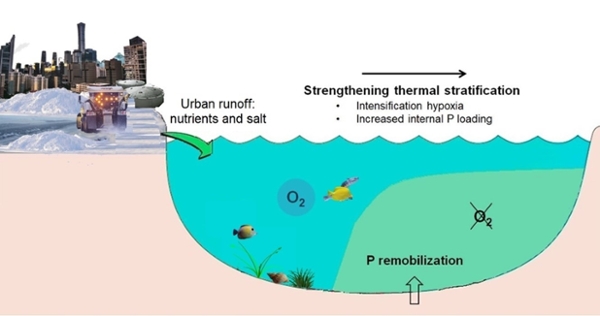
Managing road salts: a way forward
The newly established link between salinization and eutrophication symptoms has direct implications for the environmental management of freshwater bodies such as lakes, ponds, and wetlands. The usual strategy to mitigate worsening eutrophication of these aquatic systems is to reduce their external phosphorus input. However, this may not be sufficient if, at the same time, salinization is occurring.
In the case of Lake Wilcox, University of Waterloo researchers are using chemical mass balance modeling to determine the reductions in salt input that are required to bring the Cl- concentration down to acceptable levels. These results are helping the City of Richmond Hill, who manages Lake Wilcox, to adapt its watershed management plans by focusing efforts more on controlling road salt application rates in the lake’s watershed, rather than solely relying on lowering the export of phosphorus to the lake.
Additional Resources
- Salinization as a driver of eutrophication symptoms in an urban lake (Lake Wilcox, Ontario, Canada) (Open-access scientific publication in Science of the Total Environment)
- Urbanization modified phosphorus cycling and drives eutrophication in Lake Wilcox, a kettle lake in the Toronto metropolitan area (Scientific poster presentation from the 2021 American Geophysical Union Fall Meeting)
- Other media stories:
- Road salt: The silent threat to urban lakes (Innovation News Network; July 28, 2022)
- Do road salts trigger eutrophication? Reviewing twenty years of water quality data in an urban lake. (Water Institute Research; Issue 14)
Meet the Research Team

Jovana is a Ph.D. student in the Ecohydrology Research Group at the University of Waterloo interested in the biogeochemistry of aquatic ecosystems and their responses to changes in land cover-land use (LCLU) transitions. In her research, she analyzes the effects of agricultural development and urban growth on lake nutrient cycling and algal productivity. Her work shows that the increased use of road salt accompanying urban development in cold and cold-temperate regions alters the mixing regime of receiving lakes, which in turn intensifies undesirable eutrophication symptoms such as the expansion of oxygen-depleted zones within lakes.
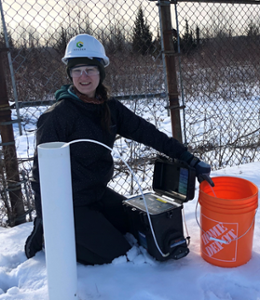
Steph Slowinski is a Research Biogeochemist in the Ecohydrology Research Group at the University of Waterloo. Steph obtained her MSc in Environmental Earth Sciences at Waterloo. While she always wanted to study earth sciences, taking her first university geochemistry course made her realize that environmental biogeochemistry – understanding and predicting how humans are altering essential ecosystem functions and services – was what she is most interested in focusing her research on. She has been coordinating the field sampling within the Managing Urban Eutrophication Risks under Climate Change project and is actively involved in the data analysis and interpretation.

Fereidoun Rezanezhad received his PhD from Heidelberg University, Germany. He is currently a Research Associate Professor in the Department of Earth and Environmental Sciences at the University of Waterloo. His research program broadly comprises soil-water-atmosphere interactions and the effects of climate and land use change on carbon and nutrient biogeochemistry in natural and anthropic landscapes. He has extensive field experience in terrestrial and wetland ecosystems, specifically with soil and water quality, and nutrient and greenhouse gas flux measurements. His current research targets cold regions Critical Zone science with a particular focus on hydro(bio)geochemical soil processes in cold-temperate to subarctic and permafrost regions. He is PI of the GWF project Winter Soil Processes in Transition and participates in GWF’s Managing Urban Eutrophication Risks under Climate Change project.

Philippe Van Cappellen obtained his BSc and MSc in geology and mineralogy from the University of Brussels, Belgium, and his PhD in geochemistry from Yale University, USA. He joined the University of Waterloo as the Canada Excellence Research Chair in Ecohydrology in 2011, where he leads the research program in ecohydrology. He is a Fellow of the Royal Society of Canada, as well as a Fellow of the Geochemical Society, the European Association of Geochemistry, and the American Geophysical Union. His research focuses on the biogeochemistry of soils, sediments and aquatic ecosystems, the cycles of water, carbon, nutrients and metals, global change, geobiology, chemical hydrology, water-rock interactions, and environmental modeling. He oversees GWF’s water quality core modeling team and is the PI of the GWF project Managing Urban Eutrophication Risks under Climate Change.
